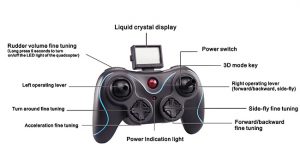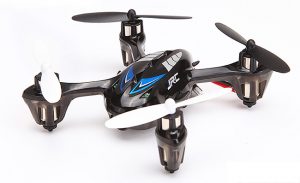As night draped itself across the savanna in South Africa’s Kruger National Park, a small round disk twinkling with green lights and sounding like a swarm of bees rose straight up into the sky.
Here, on the tarmac of a small airstrip near Skukuza, the latest in drone technology is being tested out as rangers seek to gain the upper hand against poachers who are slipping into the park and felling an average of three rhinos a day in pursuit of their horns and the riches they will buy.
The little unmanned aerial vehicle shooting about 250 metres into the sky is just one of a number of models that will be tested in a year-long pilot project run by a company called UAV and Drone Solutions.
The idea is to give extra reach and eyes to rangers trying to police 20,000 kilometres of territory often covered in scrubland and offering plenty of places for poachers to hide.
The drones use heat imaging to send pictures back to specially kitted out control vans.
There is even a Canadian connection. An Ottawa based-company called C-Com provides the mobile antennas on top of the vans allowing images to be sent via satellite in real time.
“This can make a difference, and it does work,” says Rob Hannaford of UAV and Drone Solutions, adding that the company has tested its wares already in the neighbouring province of KwaZulu-Natal.
“Wherever we flew in KZN and we had an aircraft in that particular area there was no poaching,” Hannaford says.
“If we moved out of the area, activity started again. So although we never physically caught a poacher … and we never saw a poacher … there was a visible policing deterrent.”
‘Drone fever’
Still, Hannover admits that to be effective in Kruger, the rangers will have to have multiple teams.
They will also have some work ahead of them convincing the man in charge of Kruger’s anti-poaching effort, former South African army General Johan Jooste, someone who conducts his job with military precision (and has a soft spot for country and western music).
“I call it drone fever,” Jooste says when I ask him about the pilot project.
“Unfortunately whenever they show you a drone power point or a glossy or a video it shows a pipeline or a road or a highway and they say you can even see the numbers on the number plate.
“Now there are no number plates in this bush.”
Still, testing out these drones is a sign of just how wide a net the authorities are willing to cast for ideas in the fight against poachers, and maybe an admission they’re not winning the war.
“I’ve fought 14 wars and this is by far the most taxing,” said a big burly man named Otch when I visited Jooste at his “operations centre” near the airstrip.
Otch is also a former South African military man drafted by Jooste for this campaign.
“This is the last hope for the rhino,” he says, pointing at his old friend.
A bit melodramatic perhaps — there are plenty of people aside from Jooste trying to save the rhino — but a war is what it is and there is no doubt the rhino is fighting for its survival as a species.
Brazen poaching
There is a strange elegance to these great beasts as they move through the bush – tank-like, gargantuan — yet somehow light on their feet.
And they are less aggressive than they appear, making it easier for the poachers to get quite close to them, say conservationists.
To see their carcasses with the faces hacked off is a heart-wrenching sight, all the more so given that the slaughter goes to feed ill-informed notions in countries like China and Vietnam that the horn contains both mystical and medicinal properties.
There have been some attempts at public awareness and education campaigns, but critics say Asian governments are indifferent to the plight of the rhino.
“Wherever a rhino isn’t safe,” says JP Van Zyl Roux, a South African police officer specifically assigned to combating the illegal trade in wildlife and endangered species.
“It’s a straight, easy commodity, the same as drugs, firearms, endangered species products,” he says.
As long as the demand remains high, national parks and private reserves will have to fortify themselves against poaching attacks. It’s just too lucrative for criminal gangs.
“You have high-profile, violent criminals who are changing from hijacking and cash-in-transit robberies to rhino horn because the risk of being caught is a lot smaller.”
“People would go into a game reserve late afternoon, [at] first dark shoot a rhino and have the horns chopped off, into the vehicle and by 2 o’clock tomorrow morning it’s in Johannesburg.”
Even natural history museums in Europe have been hit by criminal gangs if they have old rhino heads hanging on their walls. It’s a mind boggling, globe-straddling trade.
It is also a trade that won’t be stopped without greater will on the part of governments, including that of South Africa.
The pot of gold at the end of the rainbow is so big it invites all sorts of graft. Van Zyl Roux says the South African government here has paid lip-service to the problem without enacting legislation to deal with it.
Some accused poachers, for example, are let out on bail for as little as 300 rand. That’s about $30, and an invitation to repeat offend if ever there was one.
In the meantime, South Africa, guardian to 80 per cent of the world’s rhinos, is allowing the great beast’s numbers to decline to the point where conservationists warn that it could be extinct within a decade.
In fact, one of the biggest indictments of the South African government’s record so far is the attempt by some groups to move rhino herds out of the country altogether – drones or no drones — in a bid to protect the gene pool.

